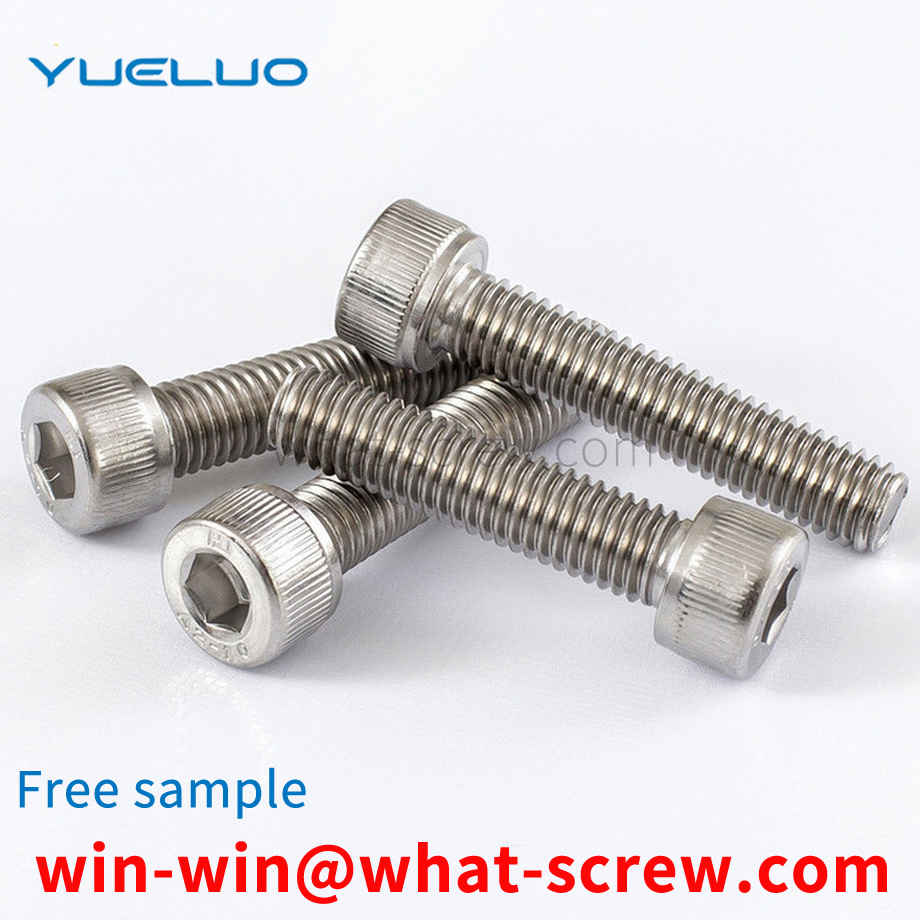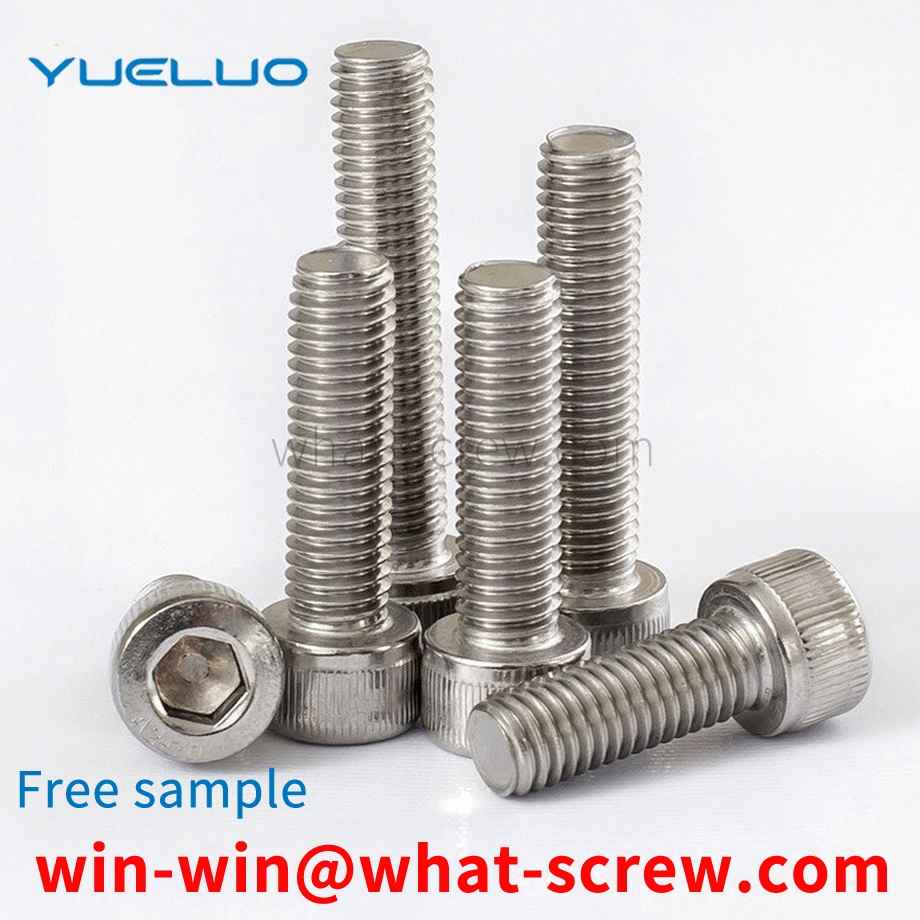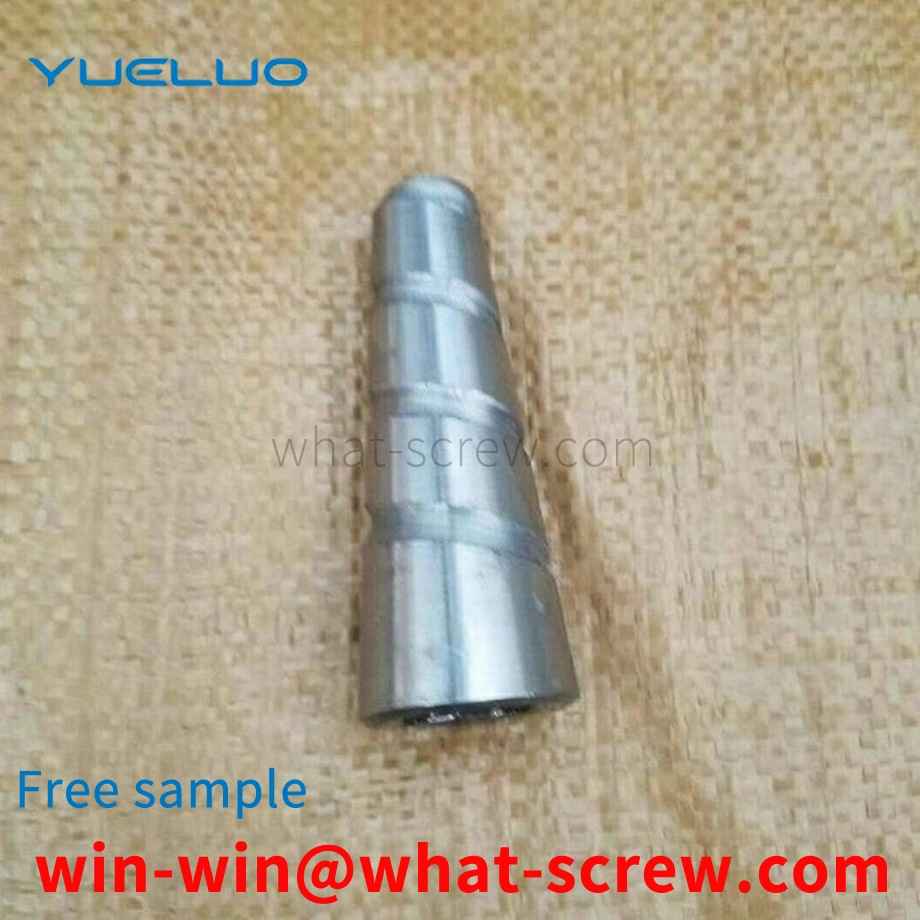What is the tolerance range of precision screws?
What is the tolerance range of precision screws?
Service Hotline
+86760-8787 8587We have more than ten years of production experience in the screw industry, the main products are: self-tapping screws, hub nuts, dome nuts, fine half-tooth bolts, galvanized casting nuts, cylinder head screws, non-standard pins, hand percussion Type rivets, copper flat head rivets, brass struts, connecting bolts, flat head countersunk head socket head cap screws, GB882 flat head slotted pins, butt welding bolts, square flat washers, German standard U-shaped screws and other fasteners, due to product material and specifications Each is different and the price is also different, please contact us if you need it.


The first is to use two identical nuts to screw on the same bolt, and add a tightening torque between the two nuts to make the bolt connection reliable. The second is a special anti-loosening nut, which needs to be used together with a kind of anti-loosening washer. The special lock nut is not a hexagonal nut, but a medium round nut. There are 3, 4, 6 or 8 notches on the circumference of the nut (depending on the size of the nut and the product series of the manufacturer). Several notches are both the focal point of the tightening tool and the snap-in of the lock washer bayonet. The third type is to drill through threaded holes from the outer surface of the nut to the inner thread surface (usually 2, which are distributed at 90 on the outer surface), which are used to screw in small-diameter countersunk head screws. The purpose is to give the thread Apply a centripetal force to prevent the locknut from loosening. The better quality lock nut sold on the market is inlaid with a small copper block that is consistent with the thread of the lock nut on the inner surface of the nut to prevent the radial jacking screw from directly contacting the locked thread and damaging the latter. . This kind of lock nut is gradually applied in the shaft end locking of rotating motion parts, such as the anti-looseness of the bearing at the mounting end of the ball screw. The fourth type of lock nut is composed of two parts, each part has staggered cams. Since the slope angle of the internal wedge design is greater than the nut angle of the bolt, this combination is tightly integrated into a whole. When vibration occurs When the lock nut is moved, the raised parts of the lock nut move with each other to generate lifting tension, so as to achieve a perfect anti-loosening effect. The fifth is structural anti-loosening. Through the design and improvement of the threaded structure, a self-locking function is obtained without the help of other external factors. Therefore, its applicability is wider than the above methods, and the requirements for the environment are also relatively high. Low. There are many types of lock nuts, such as nylon nuts and flange nuts. In short, this kind of lock nuts plays a role in preventing loosening. Twist the nut onto the screw, screw, bolt, etc., so that it will not come loose. So that they can be actively connected together, so that it is firm, and the stability can reach a high degree.

Pins are widely used. In the connection of the rotating mechanism of two moving components, such as the crank mechanism, the turning mechanism, the connection between the hydraulic cylinder and the moving parts, the pins are used. kind. In order to ensure the normal use of the running equipment and prevent the cylindrical pin from slipping out and falling off during use, some anti-falling methods are usually used at the head of the pin, such as 1. Drill holes and insert cotter pins to prevent the pins from slipping out; 2. The external thread is tightened with a nut to prevent the pin from slipping out; 3. The slot is clamped with a circlip to prevent it from slipping out, etc. These measures make the cylindrical pin very practical in the case of infrequent disassembly and assembly, but in the actual use of the field, in order to prevent the collision of some equipment during each troubleshooting or maintenance, the pin needs to be pulled out and turned up, etc. After the failure or maintenance is completed, put down and then insert the pin to restore, this process will bring trouble to the actual operator. For example, special tools must be brought with you every time you disassemble and assemble the pin, and the split pin or the circlip is easily damaged after repeated disassembly and assembly. , In order to save trouble, the operator sometimes uses iron wire to thread or fasten it instead, and even does not remove the pin for the sake of speed and convenience, which is easy to cause damage to the equipment when dealing with faults.


There are many names for bolts, and everyone may have different names. Some people call them screws, some people call them bolts, and some people call them fasteners. Although there are so many names, they all mean the same thing, they are all bolts. A bolt is a generic term for a fastener. A bolt is a tool that uses the physical and mathematical principles of the oblique circular rotation and friction of an object to fasten the parts of the object step by step. [1] Bolts are indispensable in daily life and industrial production. Bolts are also known as the rice of industry. It can be seen that the bolts are widely used. The application scope of bolts includes: electronic products, mechanical products, digital products, electrical equipment, electromechanical products. Bolts are also used in ships, vehicles, hydraulic engineering, and even chemical experiments. Anyway, bolts are used in many places. Especially the precision bolts used in digital products. Miniature bolts for DVD, cameras, glasses, clocks, electronics, etc.; general bolts for televisions, electrical products, musical instruments, furniture, etc.; large bolts and nuts are used for engineering, construction, and bridges; transportation equipment, aircraft, trams, automobiles etc. are used together with large and small bolts. Bolts have important tasks in industry. As long as there is industry on the earth, the function of bolts will always be important.

NPT, PT, G are all pipe threads. NPT is the abbreviation of National (American) Pipe Thread, which belongs to the American standard 60-degree taper pipe thread, which is used in North America. National standards can be found in GB/T12716-1991 PT is the abbreviation of Pipe Thread, which is a 55-degree sealed conical pipe thread, which belongs to the Whitworth thread family and is mostly used in Europe and the Commonwealth of Nations. Commonly used in water and gas pipe industry, the taper is specified as 1:16. The national standard can be found in GB/T7306-2000 G is a 55 degree non-threaded sealing pipe thread, which belongs to the Whitworth thread family. Marked as G stands for cylindrical thread. National standards can be found in GB/T7307-2001 In addition, the 1/4, 1/2, 1/8 marks in the thread refer to the diameter of the pipe, and the unit is inches. People in the industry usually refer to thread size in points, 1 inch equals 8 points, 1/4 inch is 2 points, and so on. G seems to be the general name for pipe threads (Guan), and the division of 55 and 60 degrees is functional, commonly known as pipe circle. That is, the thread is machined from a cylindrical surface. ZG is commonly known as pipe cone, that is, the thread is made of a conical surface. The general water pipe joints are like this. Rc means conical internal thread ZG means taper pipe thread, 3/4 means inch mark, which is 3/4 inch conical pipe Thread, there is in the Hardware Manual. The national standard stipulates that the major diameter of ZG 3/4 thread is 26.44 mm. Please refer to Metric, American and British Thread Standard Manual (Third Edition). Its representation method should be: ZG 3 /4″. Among them (〃) is the representative symbol for inches. One inch is equal to 8 inches. The origin of 3/4 is 6/8=3/4. Commonly known as 6 points. Similarly, the major diameter of ZG 1/2″ thread≈21 mm. Commonly known as 4 points. ZG 1″ thread diameter ≈ 33 mm. Commonly known as 1 inch. ZG 1 1/2″ thread pipe outer diameter ≈ 48 mm. Commonly known as 1 inch and a half. Taper pipe thread is very similar to pipe thread, the difference is Only in the taper. Note that the basic size of the pipe thread and ordinary thread is different. DN is the nominal diameter

The above content is uploaded by Yueluo or the Internet. If there is any copyright issue, please contact [email protected].

What is the tolerance range of precision screws?

How to choose the right stainless steel screw manufacturer?

Why is there an R angle under the head of the hexagon head s...

We have more than ten years of production experience in the ...

We have more than ten years of experience in the production ...

We have more than ten years of experience in the production ...

We have more than ten years of experience in screw industry ...